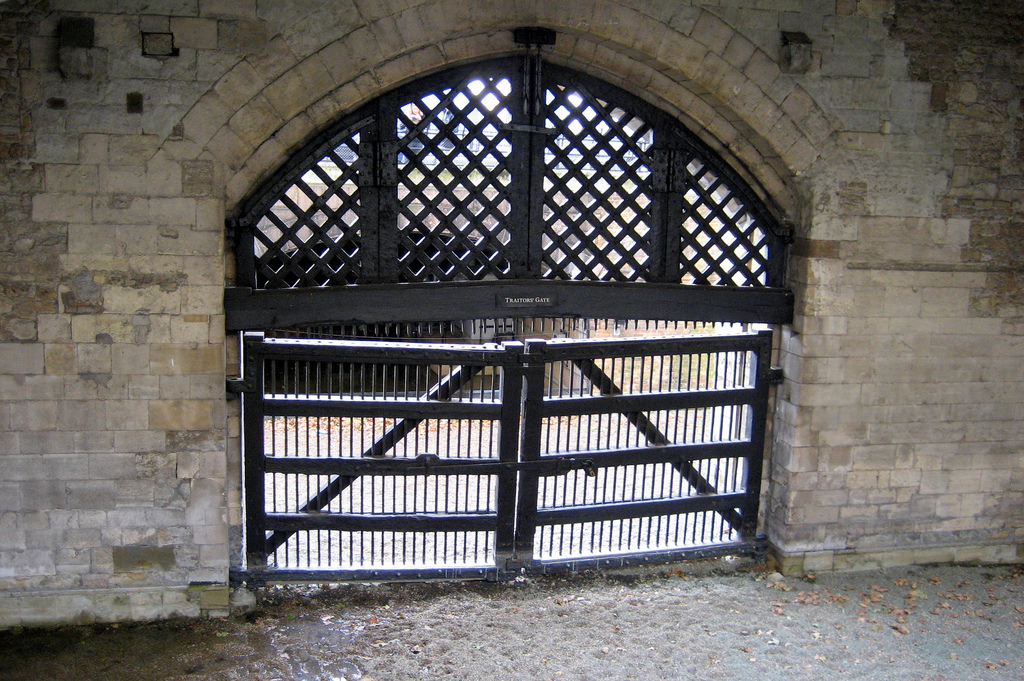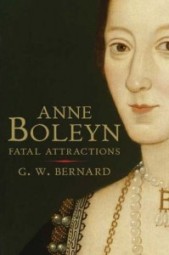
Anne Boleyn: Fatal Attractions
by G. W. Bernard
–Reviewed by Ralph Walter
 Anne Boleyn is a woman of legends. She is the six-finger seductress that ruined Henry’s marriage to the “good queen” Catherine of Catholic myth. She is the French-trained (a pejorative in Tudor England) courtesan that destroyed the arch-Machiavellian Cardinal Thomas Wolsey. She is the protestant martyr that mothered England’s greatest monarch, Elizabeth I. She is the questionably fertile harpy that Thomas Cromwell swept away so King Henry VIII could marry for a third time. Anne is very much remembered as the English Cleopatra, a woman using all her guile and attraction to make it in the man’s world of Tudor court intrigue.
Anne Boleyn is a woman of legends. She is the six-finger seductress that ruined Henry’s marriage to the “good queen” Catherine of Catholic myth. She is the French-trained (a pejorative in Tudor England) courtesan that destroyed the arch-Machiavellian Cardinal Thomas Wolsey. She is the protestant martyr that mothered England’s greatest monarch, Elizabeth I. She is the questionably fertile harpy that Thomas Cromwell swept away so King Henry VIII could marry for a third time. Anne is very much remembered as the English Cleopatra, a woman using all her guile and attraction to make it in the man’s world of Tudor court intrigue.
But the controversial scholar G. W. Bernard finds none of this folklore in his close reading of original sources. His Anne is a conventional but ambitious woman of the period, very much a traditional wife who obeyed her husband, and one whose relationship with the Cardinal was, contrary to popular belief, entirely befitting a queen. Of course, this doesn’t mean she was entirely strait-laced, and Bernard makes one particularly shocking claim against the influential queen.
Anne became Henry’s mistress in the fullest sense around 1527. It was Henry who suspended their sexual relationship. Unwilling to risk questions about the legitimacy of a long-desired son, Henry decided to replace the menopausal queen Catherine with Anne. Bernard builds the case for Henry’s early indiscretion and later reversal in a document from the Vatican archives. After a divorce wasn’t forthcoming, Henry made a moot petition to the pope to marry Anne, in which he begs indulgence to marry a woman with whom he has slept.
Most radically, Bernard argues that Anne was actually guilty of adultery. The usual historical interpretation is that Anne was the victim of a plot either by the defenders of the ‘old religion’ or by Thomas Cromwell in self-defense. Bernard dismisses the feckless Catholics and the minister as causes. Instead, citing a contemporary French source, he attributes Anne’s fall to the peccadilloes of one of her ladies in waiting who, when confronted about her own affair, defended herself by saying that the queen was also so failed. Within a month, Anne was dead and Henry was remarried.
Why would Anne take such risks? Bernard’s answer is hubris and necessity. As queen, Anne felt that she was protected from detection – an error of American presidents also. Henry’s increasingly frequent impotence decreased likelihood of the son that would secure Anne’s position. Anne, always a risk-taker, took lovers, and paid the ultimate price for it. In her final days, jailed in the Tower of London, Anne made the remark that Bernard takes as the basis for her religion, a half-reformed faith: Anne laments of her “good deeds” and yearns for communion, leading Bernard to question her commitment to the English church.
Historians will debate whether such close readings by Bernard are myopic, and in any case, he has never been one to shy away from historical disagreement. But Bernard’s book, at least, is a thought-provoking and accessible read. There are no long quotes with 16th century spelling or paragraphs of multiple phrases from several sources, all too common conventions among current historians. While Anne Boleyn: Fatal Attractions strays from the traditional portraits of E.W. Ives and Retha Warnicke – and is denser than popular biographies like Antonia Frasier’s or Showtime’s bodice-ripping series “The Tudors” – Bernard offers an erudite and controversial portrait of the legendary queen.
Ralph Walter is a member of the Zócalo board of directors.
Further Reading: The Rise and Fall of Anne Boleyn: Family Politics at the Court of Henry VIII by Retha Warnicke and The King’s Reformation: Henry VIII and the Remaking of the English Church
by G.W. Bernard
*The photo above depicts Traitor’s Gate in the Tower of London, through which Anne Boleyn passed on her way to execution. Photo above and homepage photo courtesy wallyg.




Send A Letter To the Editors